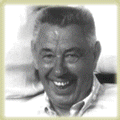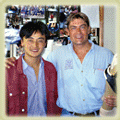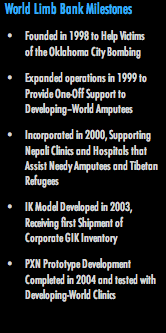Chronicle One
Chronicle Two
Chronicle Three
Arnie • Dave • Daina

During 1996, two years after being badly injured in an auto accident, Dave was considering amputation of his crippled leg when his father died following a nine month battle with cancer. “Arnie”, as he was commonly known, had lived almost 12 years as a below-knee amputee resulting from vascular deterioration. Shortly after Arnie’s death, Dave made the choice to have his leg removed. It was during Arnie’s illness and Dave’s deciding whether his own leg was worth keeping that terror befell Okalahoma City as the Fred Myrrah Building was destroyed, killing 168 victims and injuring over a hundred more.
In the spring of 1998, Dave Learned through a mutual friend of a young lady named Diana Bradley who had lost her 2 children, mother, and right leg in the Oklahoma City tragedy. Dave desired to somehow “give back” being grateful with the prosthetic care he had received from RGP Prosthetic Research Company in San Diego. Diana had been depressed and her mobility severly hampered. The prosthesis she had initially been given no longer fit and was in need of replacement.
Dave arranged with American Airlines to provide complimentary flights to San Diego for her and her son, Alize. Upon their arrival, he set to fit her with a brand new, state-of-the-art prosthesis through the generosity of Tom Guth, CP of RGP Prosthetic Research Company. It was the beginning of a new life for Diana Bradley, and the very beginning of the Arnold Franke World Limb Bank Foundation.
Kathmandu • Taga • Gyanendra
While preparing for his Nepali trek in 1998, Dave read an article

Working with the Tibet Society in Los Angeles, Dave decided that before making his ascent near Everest base camp at Gokyo Ri, he would first search for Taga in Kathmandu, encourage him and provide for his prosthetic care. The quest to find Taga however, would prove to have more twists and turns than Dave's climb to the Himalayan summit.
Dave scheduled a conference with a Nepali bureaucrat at the Office of Tibet who, due to fragile political conditions with China, was ordered to secrecy regarding the whereabouts of hidden Tibetan refugees within Nepal. Had it not been for the quiet Tibetan woman who served their afternoon tea, the story would have come to a disappointing end. Instead, Dave followed her discreetly the next morning to a heavily guarded Tibetan refugee camp where Taga was kept. The meeting with Taga was a turning point for both Dave and the World Limb Bank.
After finishing his trek to almost 18,000 feet, Dave returned to Kathmandu to research the need for prosthetic care in Nepal. Dave spent several days at Orthopaedica Kathmandu in the company of Gyanendra Chandra Shrestha, CPO. The need was tremendous. The World Limb Bank could use the small clinic, serving nearly all of Nepal, as a model with which to begin supplying underserved nations with donated prosthetic components. The idea seemed overwhelming at first. With that in mind, Dave returned to California to begin pulling together a small team to create the framework with which the dream could be realized.
Building Upon An Idea
Dave’s original intent was to provide regional assistance for

In the spring of 2000, Dave returned to Katmandu with Rick Callahan and other associates of the World Limb Bank. The greeting that awaited them at Katmandu airport stunned the travel weary World Limb Bank team—13 grateful faces of people whose lives had been changed from the receipt of prosthetic components donated earlier that year by the World Limb Bank. It truly was an auspicious sign.
After realizing the enormity of the prosthetic need solely from the tiny Kingdom of Nepal—and the profound influence it had to change lives, indeed societies—Rick Callahan began to visualize a greater mission for the World Limb Bank. It was his idea to create a global “virtual warehouse” linking suppliers of donated prosthetic resources to world relief organizations and clinics that serve impoverished patients. The potential to efficiently help thousands of amputees, was now only a click away. Rick, along with the gracious Web-skill contribution of Matthew McKarcher took to creating the World Limb Bank application that simplified the complex inventory process and offered an effortless, self-administered user experience.
Though only regional at first, the World limb Bank was now ready to begin the road of meeting amputee needs on a global level.
